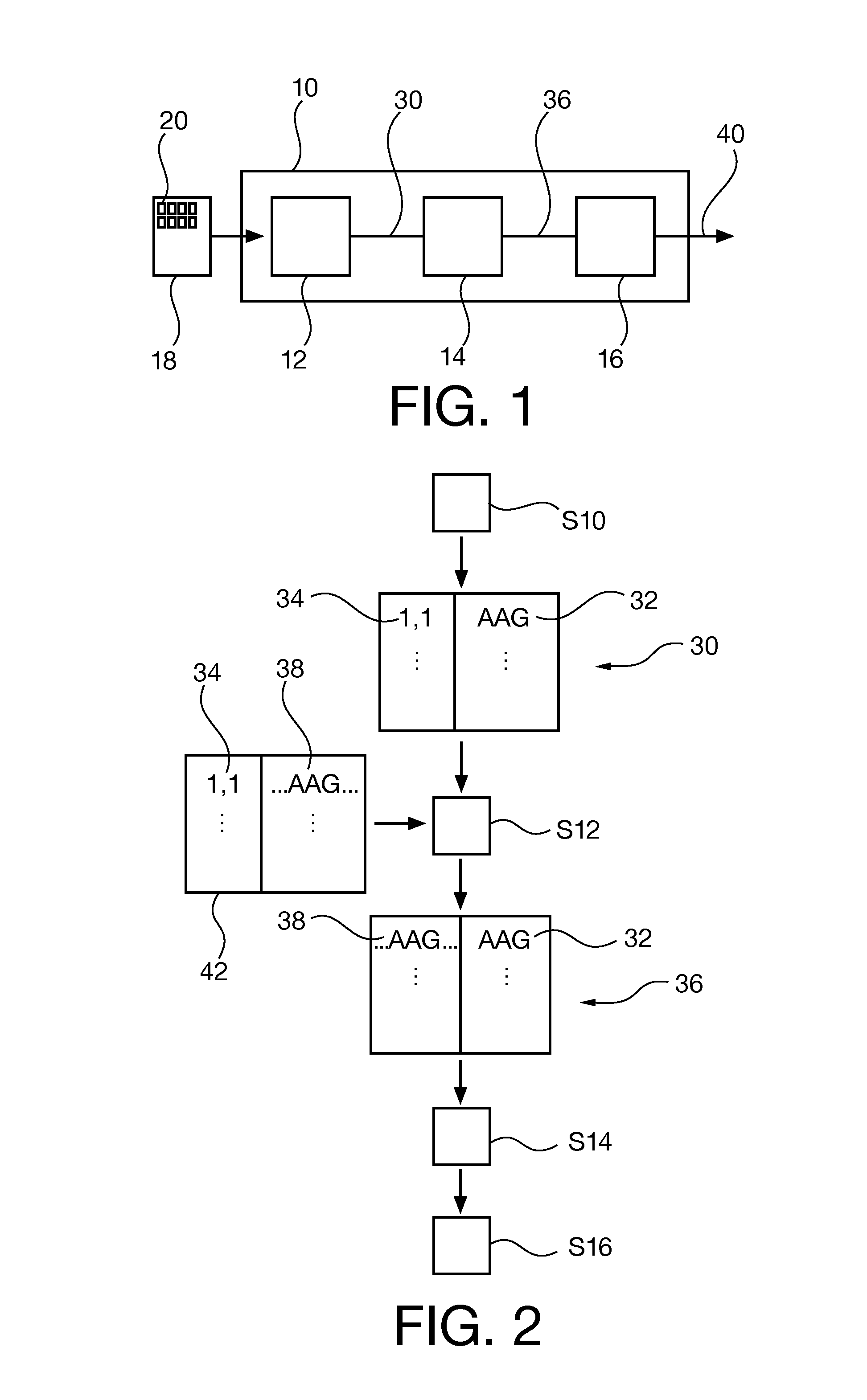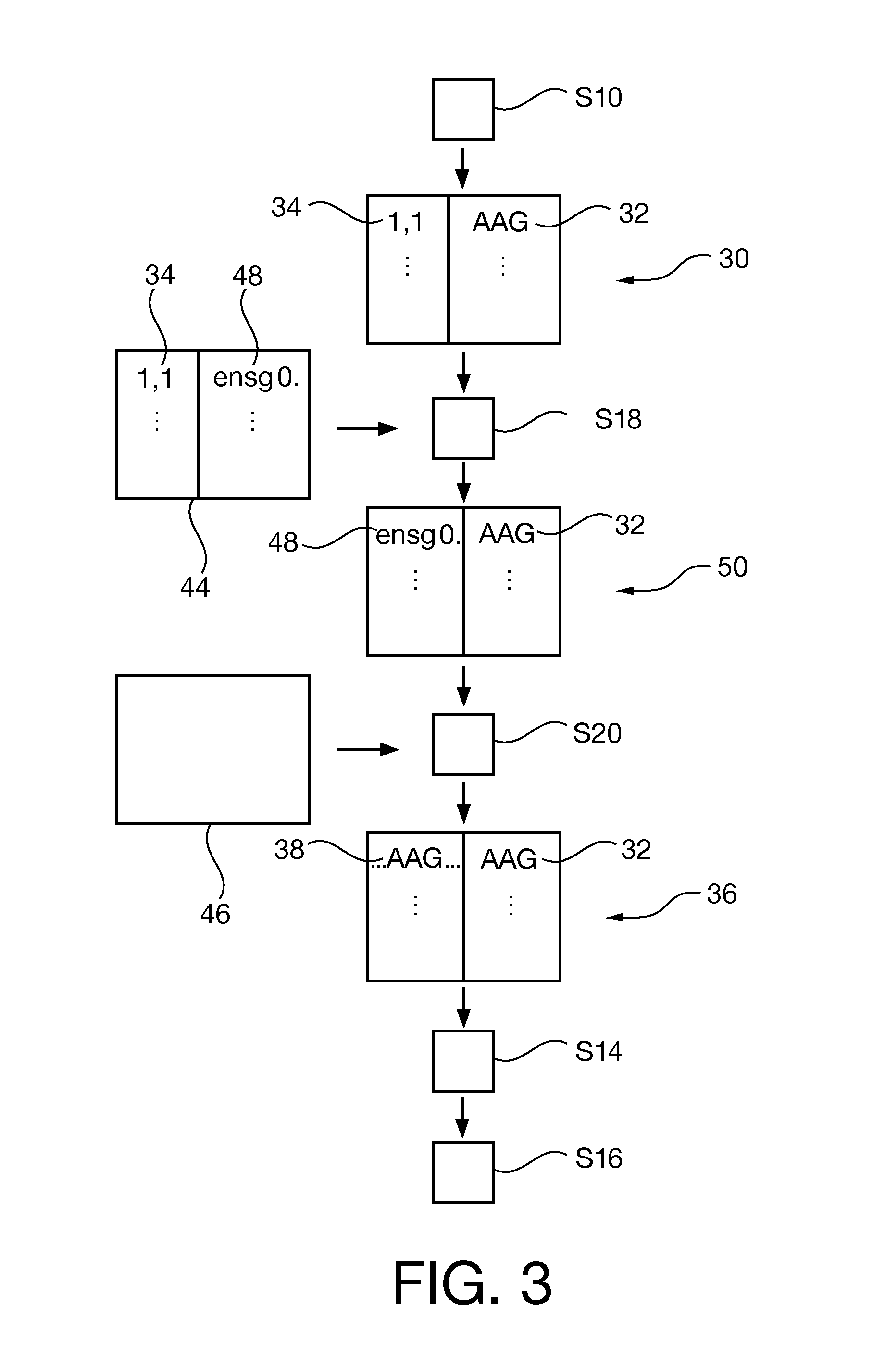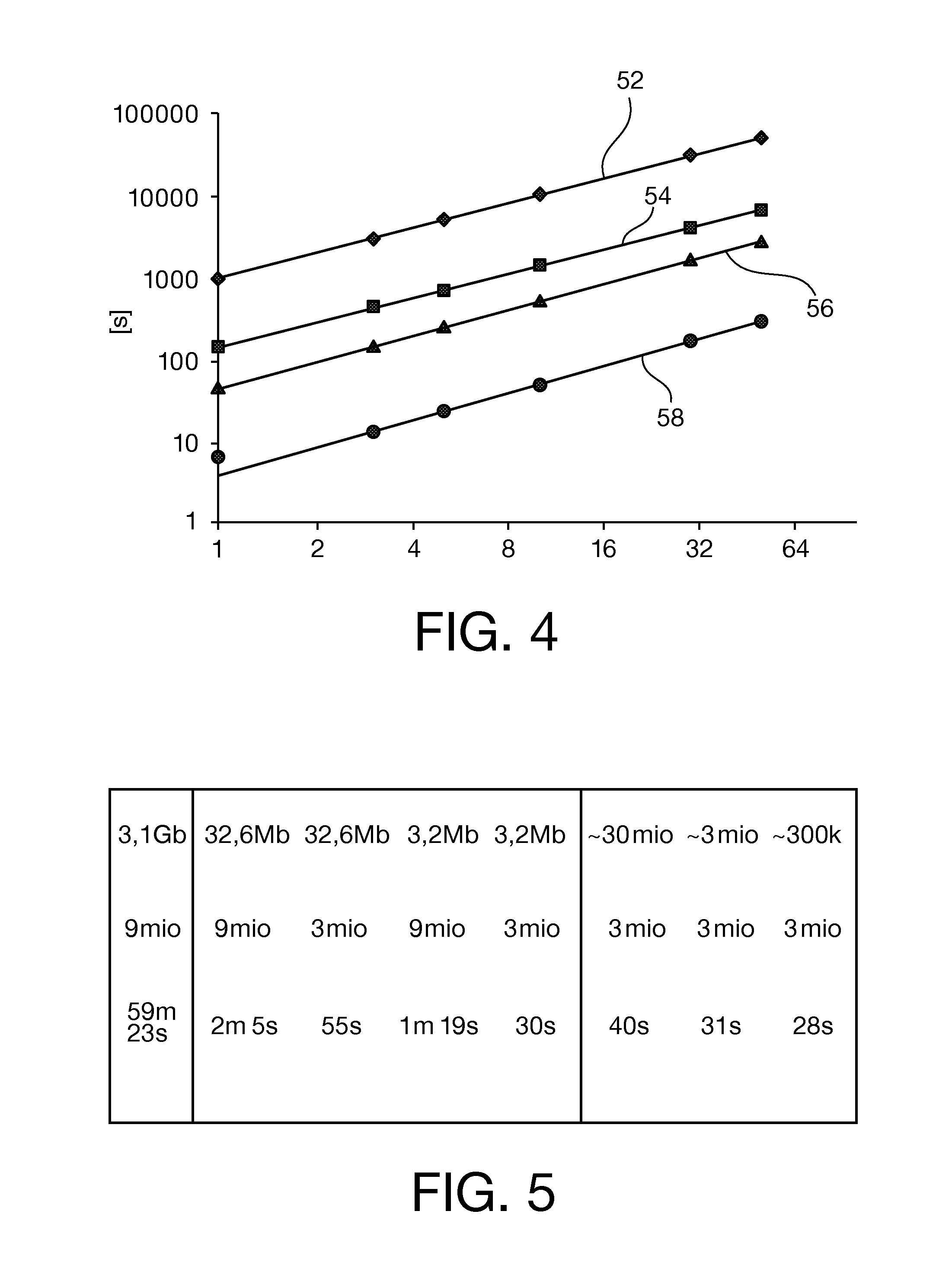Providing nucleotide sequence data
a nucleotide sequence and data technology, applied in the field of nucleic acid sequencing and bioinformatics, can solve the problems that the bioinformatics analysis may still be a very laborious process, which takes easily a week for most analyses, and achieve the effect of reducing alignment errors and speeding up the speed of bioinformatics analysis
- Summary
- Abstract
- Description
- Claims
- Application Information
AI Technical Summary
Benefits of technology
Problems solved by technology
Method used
Image
Examples
embodiment 1
2. The method of embodiment 1,
[0228]wherein the probe data (34) comprises position data (68, 70) and the expected sequence (38) is determined by interrelating the position data with the expected sequence.
3. The method of embodiment 1 or 2,
[0229]wherein the reference to the expected sequence (38) comprises the expected sequence itself, a genomic position and / or a start position of the expected sequence within a reference sequence, and / or
[0230]wherein the reference to the expected sequence (38) is also a reference for variants of the expected sequence (38).
4. The method of one of the preceding embodiments,
[0231]wherein the expected sequence (38) is determined from a data table (42), the data table comprising records linking probe data and an associated expected sequence.
5. The method of one of the preceding embodiments,
[0232]wherein the probe data (34) is converted by:
[0233]first converting the probe data into a genomic position (48) of the fragment of nucleic acids by reading the gen...
embodiment 7
8. The method of embodiment 7,
[0238]wherein the exact match is checked by string comparison of the determined sequence of identifiers (32) with the expected sequence of identifiers (38).
9. The method of embodiment 7 or 8, further comprising the step of:
[0239]Aligning the determined sequence (32) to a reference nucleotide sequence by performing a regular alignment algorithm, if no exact match is found for the expected sequence.
10. The method of one of the preceding embodiment,
[0240]wherein the nucleotide sequence data is encoded in the FASTQ format, in the FASTA format, in the EMBL format or the GCG format.
11. A method for determining a sequence of nucleotides for a nucleic acid sample, the method comprising the steps of:
[0241]Providing a plurality of capture probes, each of the capture probes adapted to capture a specific sequence of a fragment of nucleic acids;
[0242]Hybridizing the capture probes with a plurality of fragments of nucleic acids generated by fragmenting a nucleic acid...
embodiment 11
13. A computer-readable medium, in which a program element for providing nucleotide sequence data is stored.
14. A sequencer device (10),
[0247]wherein the sequencer device (10) is adapted to generate basic nucleotide sequence data (30) comprising a determined sequence of identifiers (32) for nucleotides of a fragment of nucleic acids and probe data (34) of a capture probe that has captured the fragment of nucleic acids;
[0248]wherein the sequencer device (10) is adapted to interrelate the probe data (34) with an expected sequence (38);
[0249]wherein the sequencer device (10) is adapted to generate nucleotide sequence data (36) comprising the determined sequence of identifiers (32) and a reference to the expected sequence (38).
15. The sequencer device (10) of embodiment 14,
[0250]wherein the sequencer device (10) is adapted to perform the steps of one of the methods of embodiments 1 to 11.
PUM
| Property | Measurement | Unit |
|---|---|---|
| melting temperature | aaaaa | aaaaa |
| melting temperature | aaaaa | aaaaa |
| melting temperature | aaaaa | aaaaa |
Abstract
Description
Claims
Application Information
 Login to View More
Login to View More - R&D
- Intellectual Property
- Life Sciences
- Materials
- Tech Scout
- Unparalleled Data Quality
- Higher Quality Content
- 60% Fewer Hallucinations
Browse by: Latest US Patents, China's latest patents, Technical Efficacy Thesaurus, Application Domain, Technology Topic, Popular Technical Reports.
© 2025 PatSnap. All rights reserved.Legal|Privacy policy|Modern Slavery Act Transparency Statement|Sitemap|About US| Contact US: help@patsnap.com



